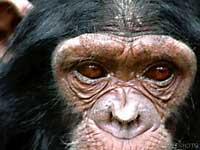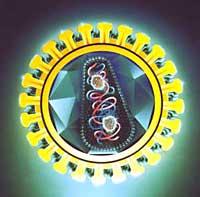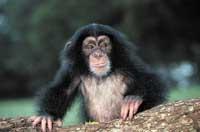Mono-Jaleas participated in the birth of AIDS
2003/06/13 Galarraga Aiestaran, Ana - Elhuyar Zientzia

The idea that appears in this article has nothing to do with the most widespread theory so far. According to this theory, a virus, the SIVcpz virus, which was originally the most mono virus, reached humans along with polio vaccines, for which chimpanzees cells were used, where the virus was transformed and human infection capacity was acquired. Although more and more researchers considered this theory to be erroneous, they find no clues for proposing another theory.
However, researchers from the British University of Nottingham have studied the genetic sequence of viruses such as HIV-1 and monkeys, and based on this work have launched a new proposal. According to them, the precursor of GIB-1 passed to the human being by eating monkeys.
This is not totally new, it has been other researchers who have released the same idea, but they did not explain how the pioneer that jumped to the human being emerged. The University of Nottingham has analyzed it and according to their work, the SIVcpz virus was created by mixing two SIV strains that infect two species of primates. Apparently, the virus passed when one species ate the other, and when mixing the genomes of the viruses of both appeared the variant that managed to jump to man.

However, they do not know for sure whether the confusion gave the virus the ability to transmit it to the human being, and they believe that this can happen randomly. In addition, they do not know if the SIVcpz virus was mutated after jumping into the human being or became a virus similar to GIB-1 before reaching the human being.
However, they are clear that these viruses are able to overcome the limit between species, so it is possible that another SIV will jump to humans and generate another HIV. SIV virus infects 30 species of African monkeys. Now, researchers at the University of Nottingham analyze the strains in monkeys and want to know how many monkeys are infected.
On the other hand, they highlighted that chimpanzees with SIV virus do not get sick, perhaps because they have evolved to overcome the infection or because the virus has been reduced. According to the researchers, this aspect has been analyzed very little but can be important.
For more information, see the dossier Ez hiesar i.

Gai honi buruzko eduki gehiago
Elhuyarrek garatutako teknologia






